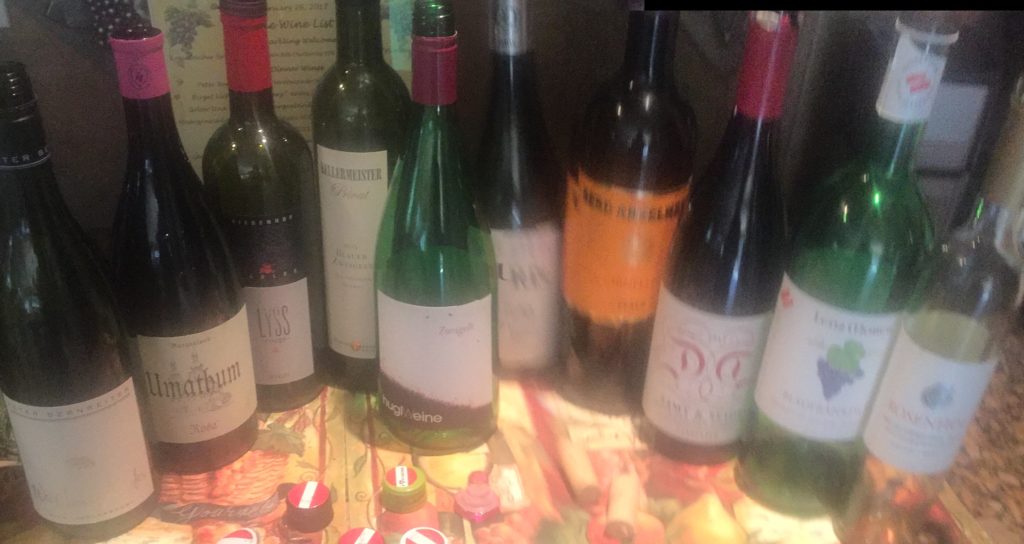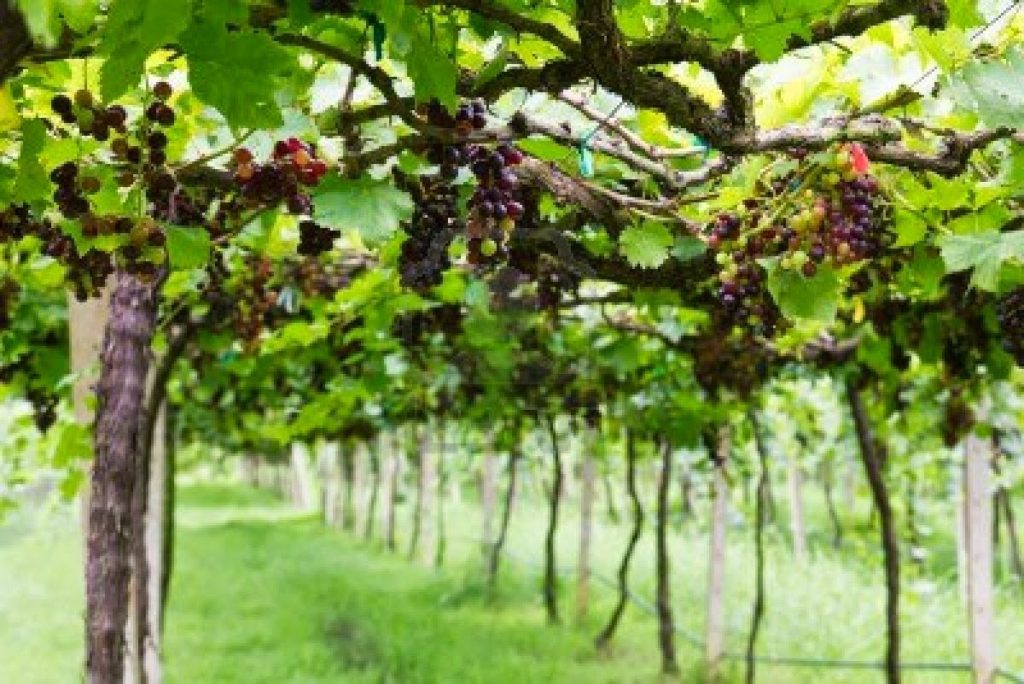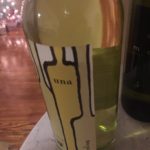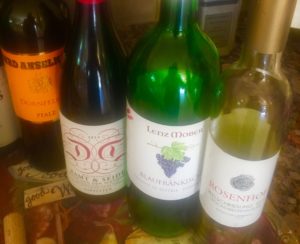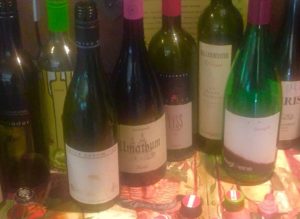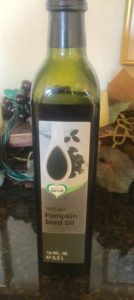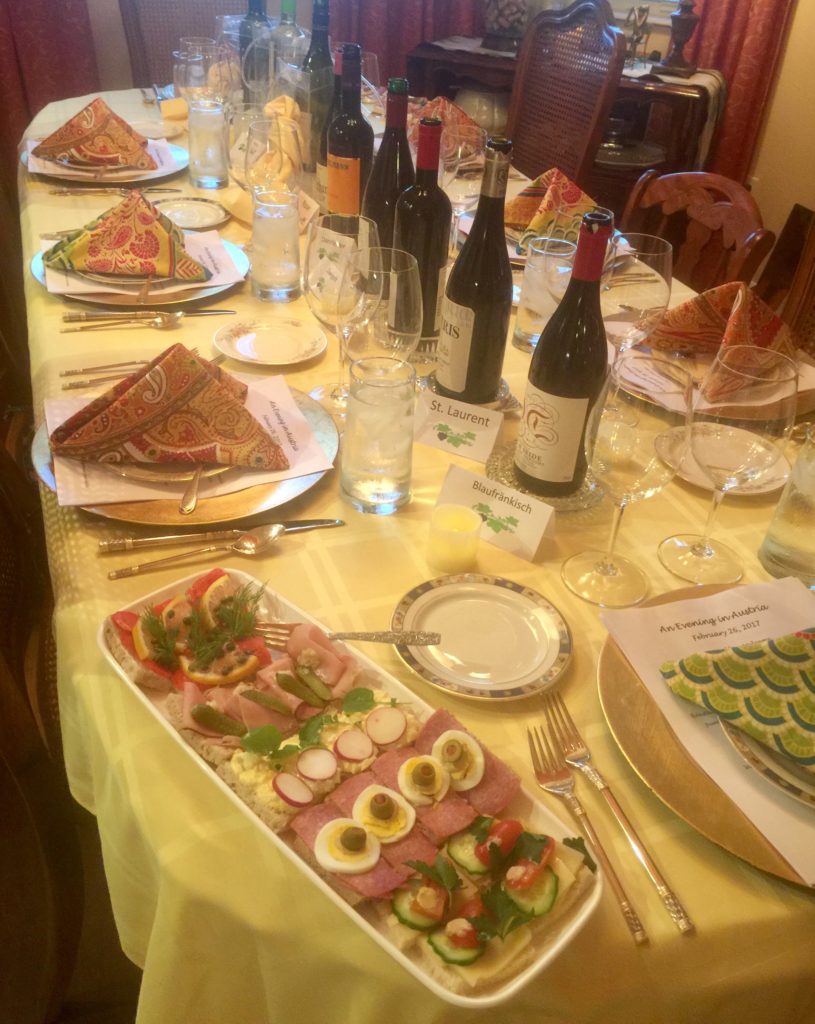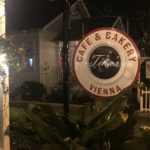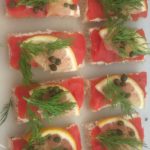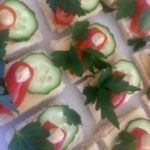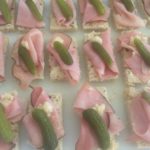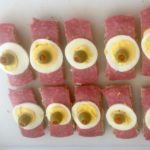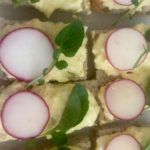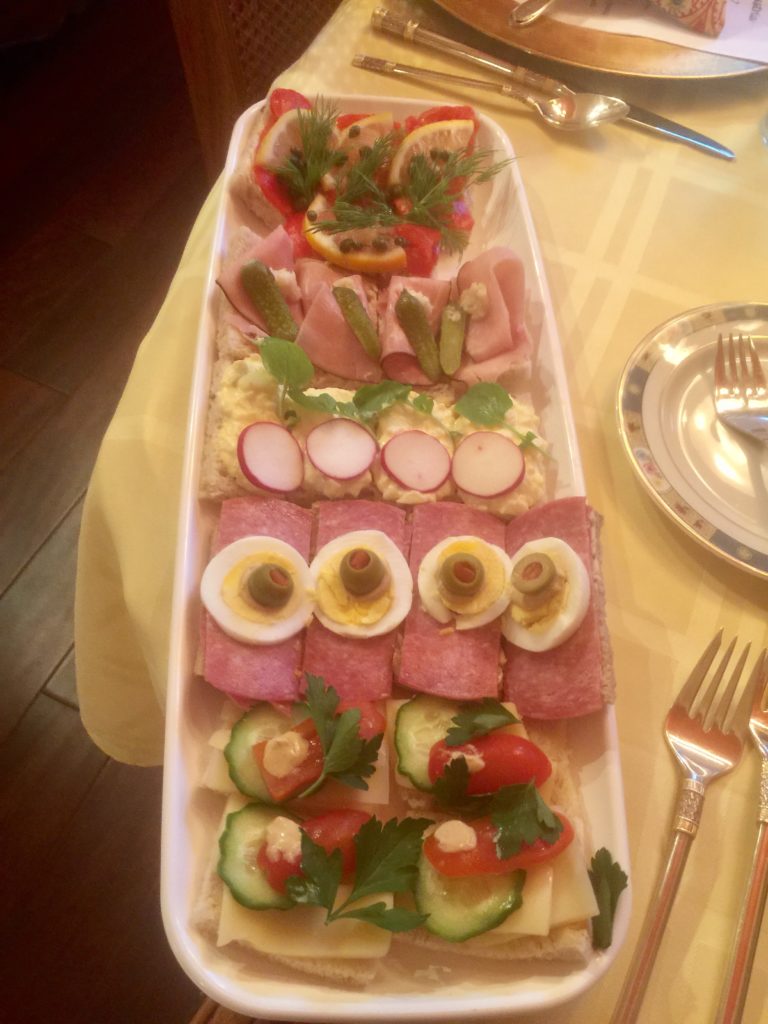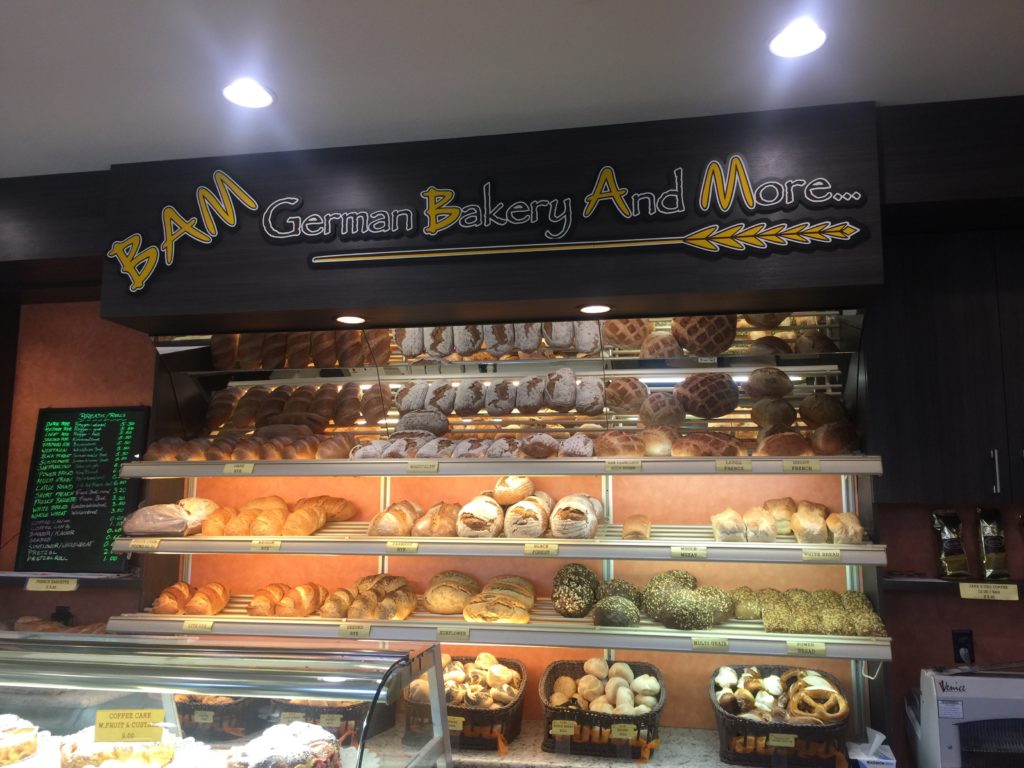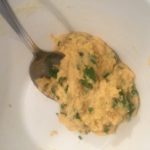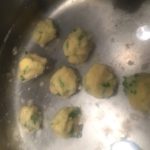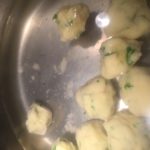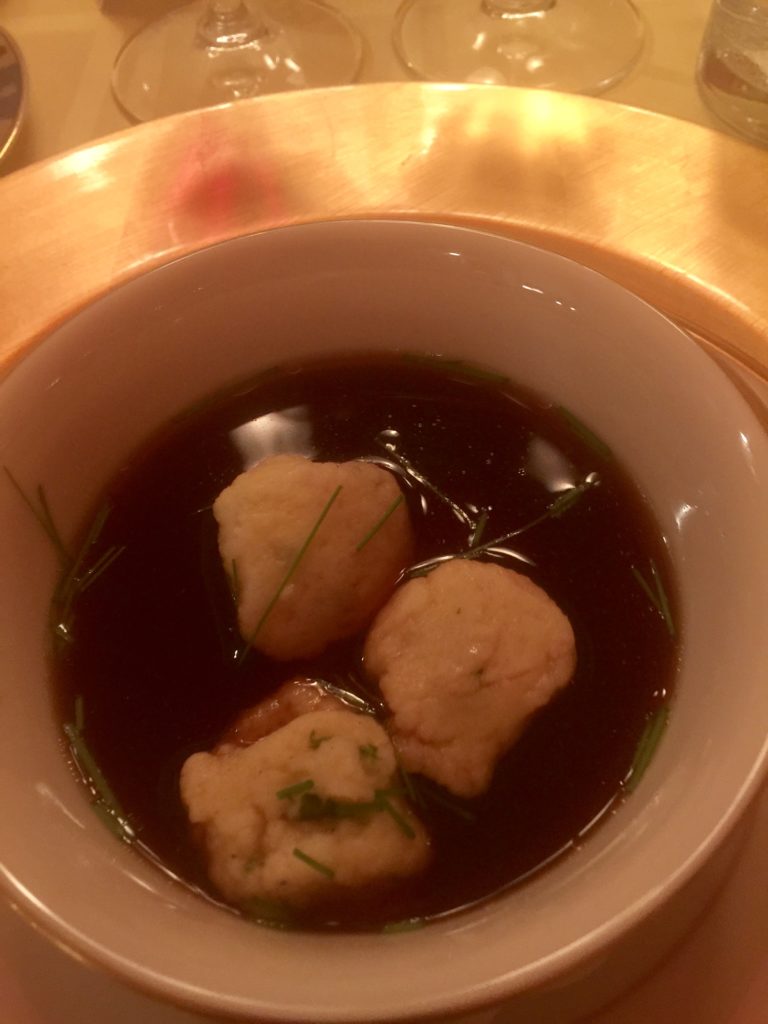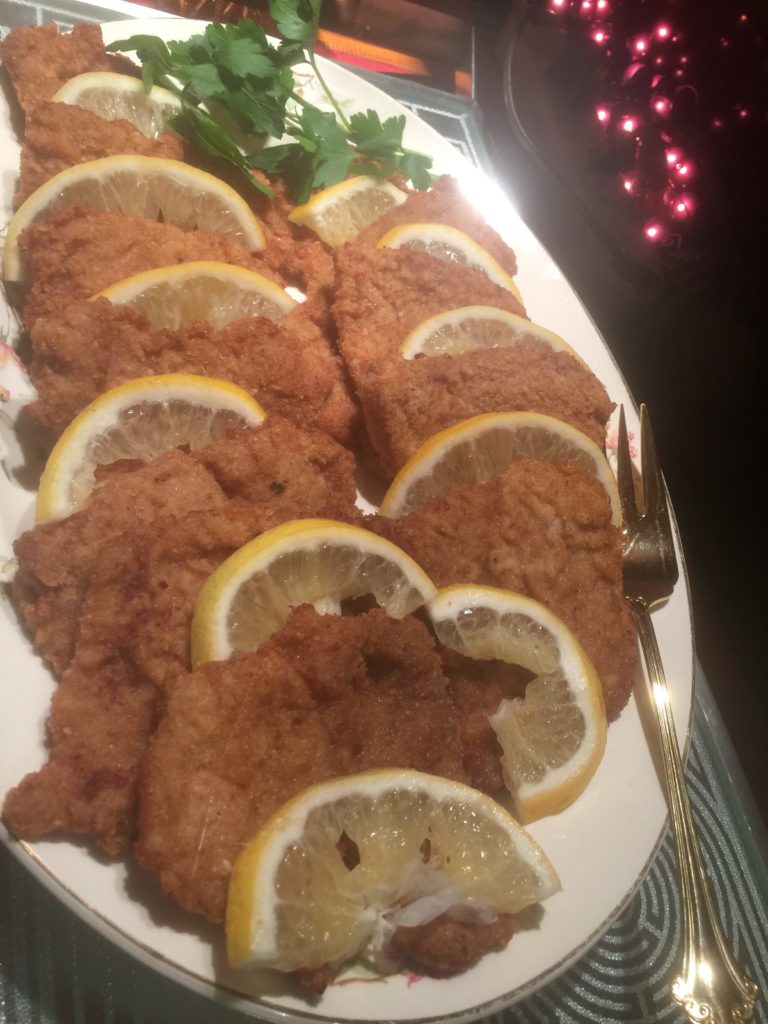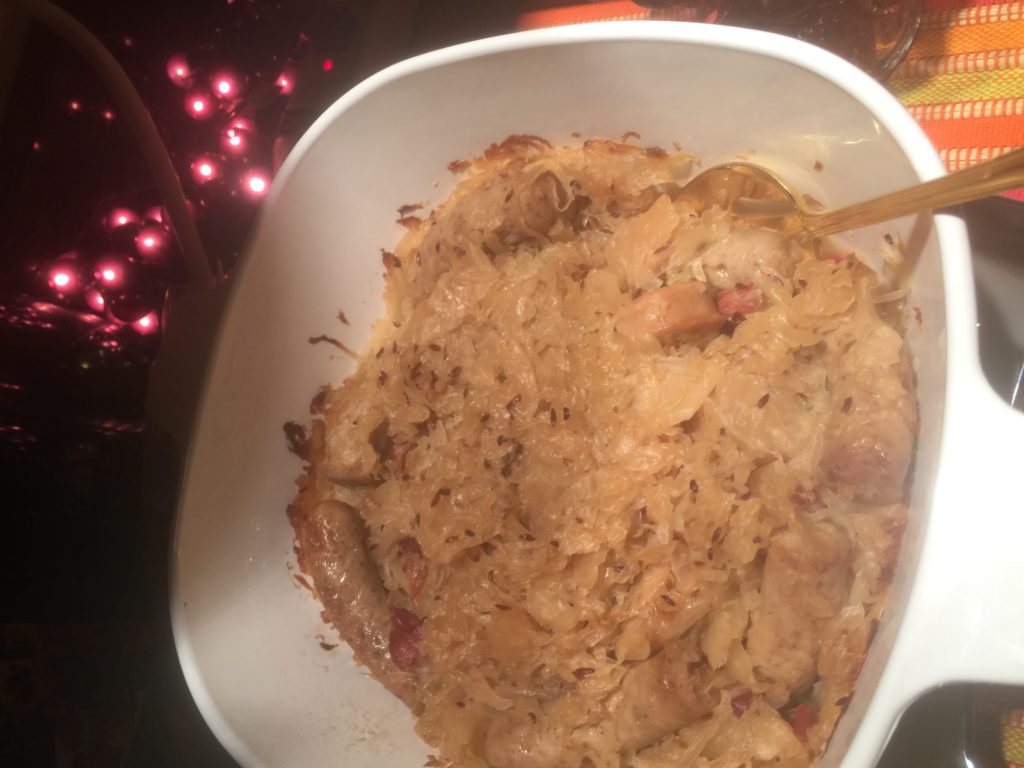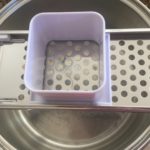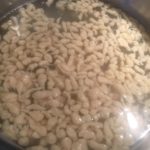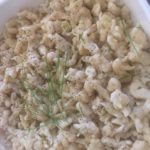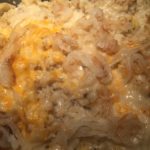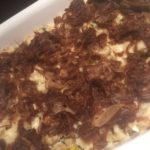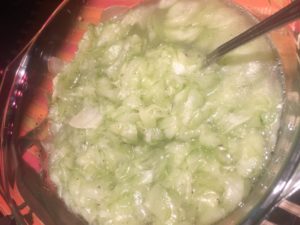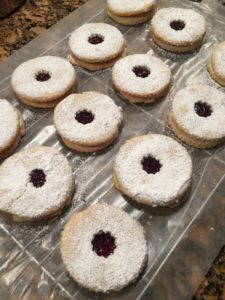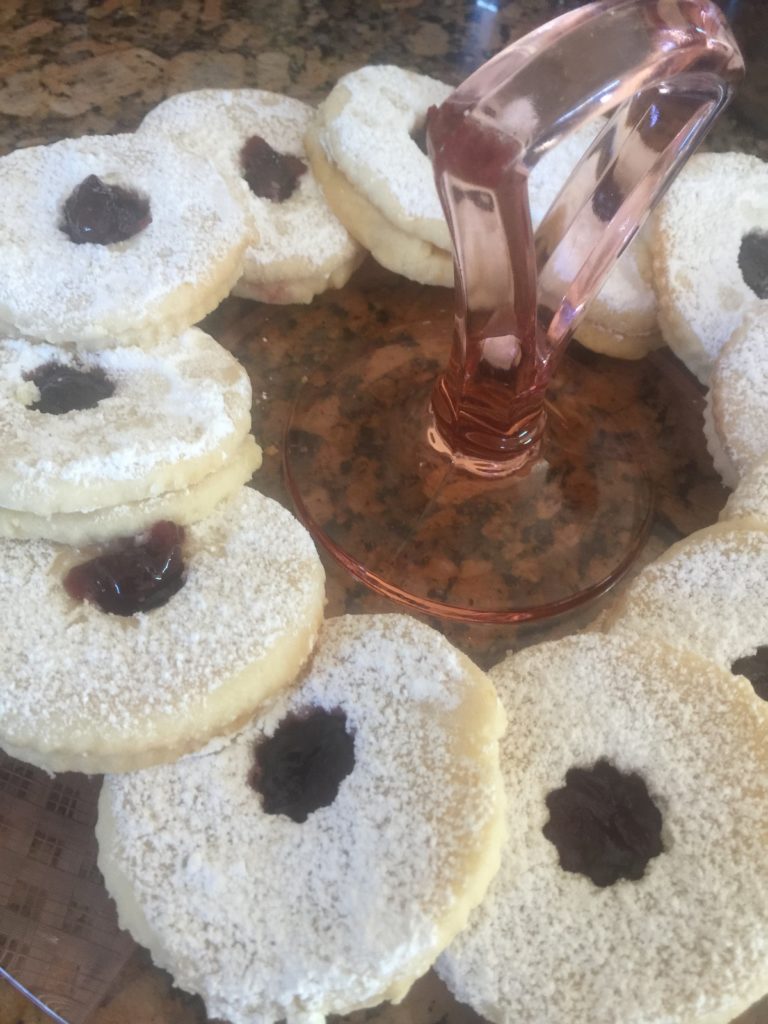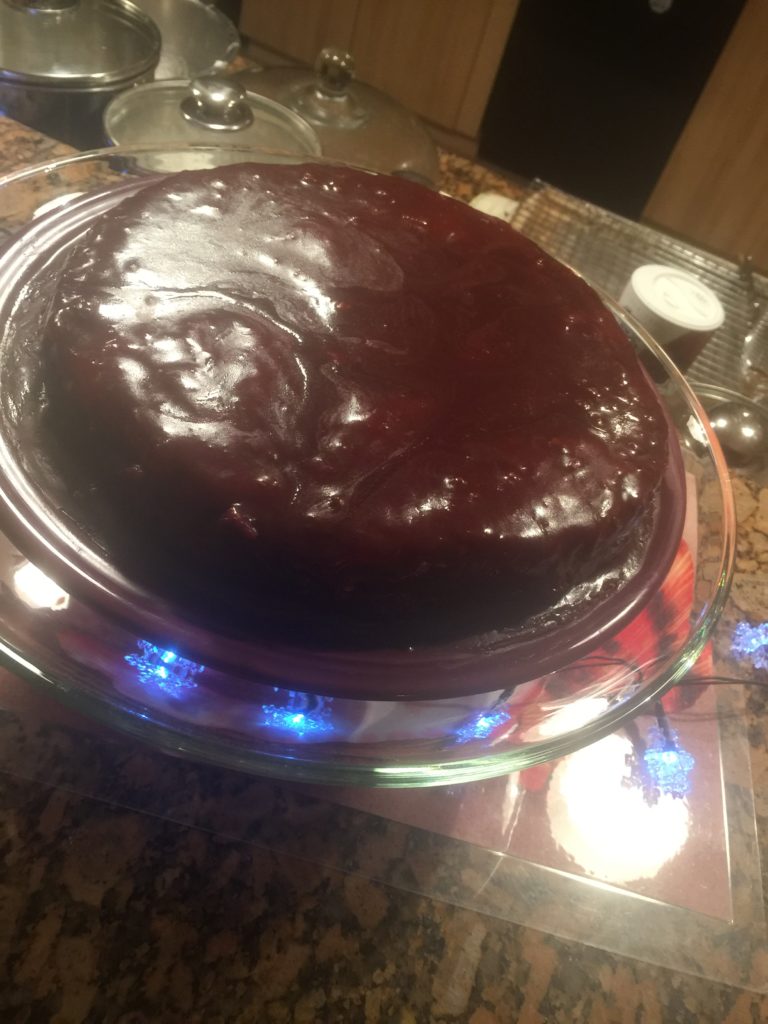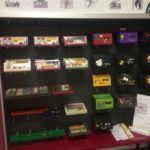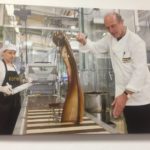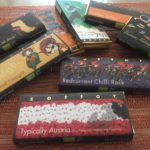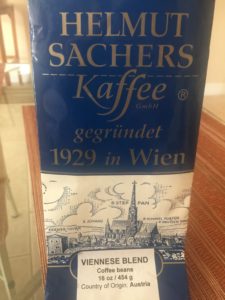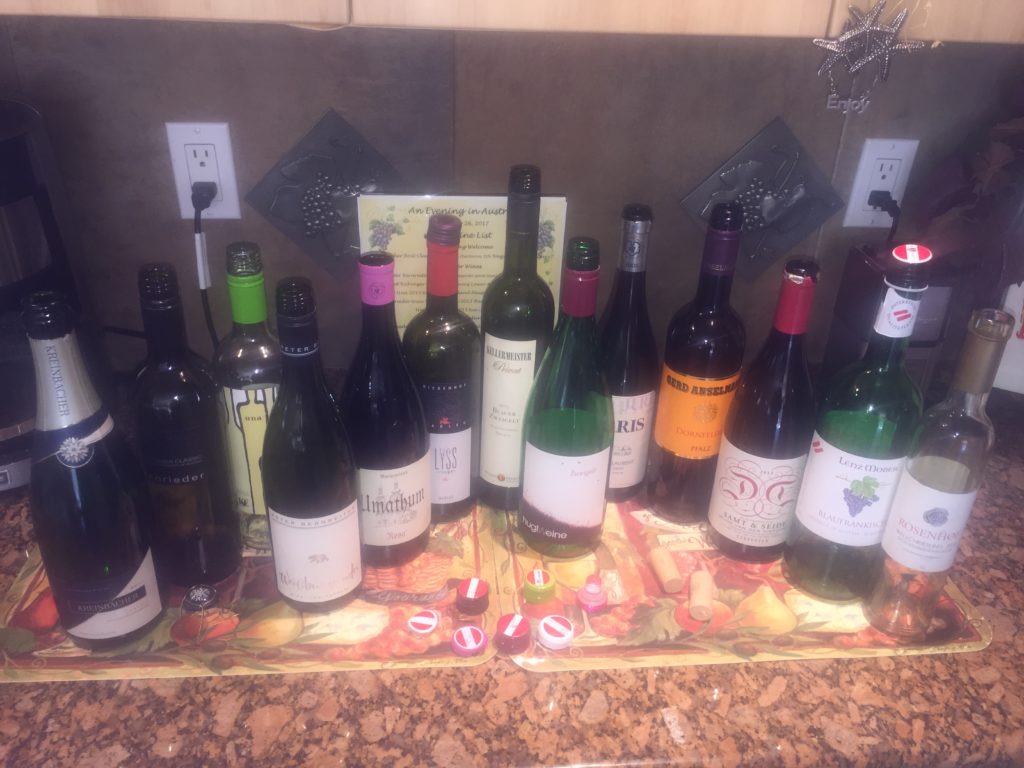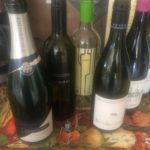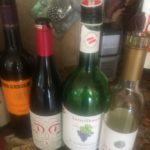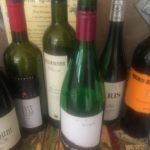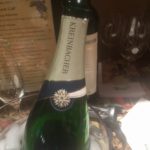Here is a list of the wines tasted during a recent “An Evening in Austria” home wine dinner event. Some basic information about the wines and suggested food pairings has been included.
Peter Bernreiter 2015 Weissburgunder (Pinot Blanc) Vienna (Wien)
Bernreiter wines first imported to US in 2011; most are consumed on property at his Heuriger; vineyards in northern more rural part of Vienna.
Cool fermentation in stainless steel; 100% Weissburgunder; alcohol 14%
Spicy with apple aromas on the nose and a good body on the palate. (Very nice white varietal with everything on the menu; purchased from Blue Danube Wine Company of Los Altos, CA – www.bluedanubewine.com )
Food pairings: traditional caraway pork belly roast, minced meat patties, meat dumplings and Wiener Schnitzel.
Birget Eichinger “Gaisberg” Reisling Lower Austria Kamptal DAC
Grapes were macerated 15 hours before pressed off and preclarified for 20 hours; must then fermented using a special yeast for Rieslings; alcohol 13.3%
A wave of citrus on the nose, then marzipan and peach; voluminous body releases fruit, residual sugar perfectly offsetting its acidity; attractive lingering aftertaste; classic Riesling character. (Good Austrian Riesling from B-21 Fine Wine & Spirits in Tarpon Springs, FL – www.b-21.com)
Food pairing: fish in particular.
Golser Una 2015 Riesling Burgenland Neusiedlersee DAC
Cool fermentation in stainless steel barrels; alcohol 12%; an 89 pts WE Best Buy
A refreshing wine, crisp, well balanced acidity with mid-body structure. A hint of lemon and earth on the nose, dried fruits and citric flavors with a hint of apples. (Really nice Riesling and best buy; purchased at Tina’s Café, Punta Gorda, FL)
Food pairing: chicken, seafood, soft cheeses and Asian cuisine
Muenzenrieder Gruner Veltliner Classic 2013 Burgenland Neusiedlersee DAC
Cool fermentation in stainless steel barrels; 100% Gruner Veltliner; Alcohol 12%
Scent of fresh apples with delicate spices on the nose; refreshing mineral style, harmonious finish with good length. (From Tina’s Café)
Food pairing: great partner for all kinds of dishes from rustic cuisine to fish, pasta and salads as wells as Asian cuisine.
Umathum Rosa 2015 Rose Burgenland Neusiedlersee DAC 92 pt WE
A biodynamic winery; fermentation in stainless steel tanks; a cuvee of ZW 33%, STL 33% and BF 33%0 alcohol 13%
Luminous pink hue with spicy elderberries, luscious strawberries and juicy red cherries. Elegant . Floral . Cherry . Spice . Medium-bodied (This wine is best served chilled and was a surprise hit with the group; purchased from B-21 Wine)
Food pairing: good aperitif, salads, fish and seafood, hard cheeses and bacon varieties.
Lenz Moser Blaufränkisch trocken 2013 Burgenland
Fermentation in steel tanks; 100% Blaufränkish; alcohol 12.5%
Spicy flavors, dark berries and other dark fruits; well integrated tannins with a strong body and very dry finish. (Good introduction to the varietal; from Tina’s Café)
Food pairing: veal, beef and pork, as well as pasta and vegetarian dishes.
Muhr-van der Niepoort Blaufränkisch samt & seide 2013
Lower Austria Carnuntum “Velvet and Silk”
Gentle maceration without any mechanical tools; focus on handwork; wooden barrels for 2 years; alcohol 13%
92 pts Wine Enthusiast: Nothing obvious about this wine: everything is subtle and elegant. Nose holds back and taut palate only opens slowly to show as floral, fruity wine that reminds one of crimson peony petals as much as dark, juicy cherries; silky smooth texture with a killer blow. Velvet and silk is perfect name.
89 pts Robert Parker: Very clear and delicate, almost Pinot-like bouquet of ripe red berries and cherries intertwined with fine mineral and spicy flavors; medium-bodied and very elegant, silky texture and fruity reds; remarkably fine tannins; good well balanced finish; very food friendly.
(Highly enjoyed by the group; purchased from Blue Danube Wine Company)
Food pairing: grilled meats; lamb; bratwurst; hamburgers; tomato and basil pasta, feta cheese
Juris St. Laurent Reserve 2009 Burgenland Neusiedlersee DAC
Stiegelmar family has been making wine since 1571; gravity flow for 4 floors and Austria’s first passive energy winey.
Georg Stiegelmar named 1995 Winemaker of the Year by Intl Wine & Spirit Competition in London; 2013 Bronze Decanter World Wine Award
12 months in barrique followed by 6 months in large oak barrel; 100% St. Laurent; alcohol 14%
Big spicy, plummy aromatics coupled with thick skinned earthiness – like Pinot Noir’s bolder and cheekier sister!
(Nice red with our Austrian menu; purchased from Blue Danube Wine Company)
Food pairing: pork, venison, gamey veal/rabbit stews, mushrooms and anything topped with a juniper sauce.
Riedenhof Kadlec Merlot LYSS 2012 Burgenland
One year in wood barrique; 100% Merlot; alcohol 13.5%
Deep dark ruby red with purple reflexes on the rim; present but pleasant tannins; vibrating structure with a fine fruity finish; elegant balance between smoothness of the Merlot and oakiness of the barrel. (This was the most controversial wine of the tasting. Several people really enjoyed it and others did not care for it. From Tina’s Café.)
Food pairing: beef Borguignon, beef stroganoff, hamburgers, meatloaf, steaks with mushroom sauce, pasta and pizza.
Hugl Weine Zweigelt Lower Austria Weinviertel DAC
Fresh spicy fruity cherry flavors; full bodied smooth and round; alcohol 13%
(Good Zweigelt and purchased from Total Wine & More)
Winzer Krems “Kellermeister” Zweigelt Lower Austria Kremstal DAC
Tight, tannic flavors of berry and dried cherry; alcohol 13.5% (Another good Zweigelt from Total Wine)
Food pairing: game, roast beef and poultry, meat-pies, matured cheese
Rosenhof Welschriesling Trockenbeerenauslese TBA 2012
Burgenland Neusiedlersee DAC 92 pt WE and Bronze International Wine Challenge
TBA is the final harvest with the most noble rot; grapes are individually picked; rare and expensive due to labor intensive production and very specific climate conditions; everything is fermented together unlike Tokaji where the grapes are mashed into a paste before being added to a fermenting fresh base wine; alcohol 9%.
Aromatic and incredibly persistent flavors of apricot, honey and winter spice. A very, very fresh-fruited TBA with immense liveliness. (These wine tasters are not big dessert wine drinkers, but this one was very enjoyable – the honey drizzle on the cheese did the trick; purchased from Blue Danube Wine Company).
Food pairing: Grilled fruit, pungent cheese drizzled with honey.
Kreinbacher Brut Classic Furmint 85% Chardonnay 15% Somlo (Hungary)
Somlo is Hungary’s smallest appellation and is 90 miles west of Budapest; just a short distance from Austrian border.
22 months of aging; traditional methode Champenoise in Coquard presses from Champagne; alcohol 12%
Citrus and mineral nature of furmint plus smoke and creamy weight of Somlo; familiar grapefruit and green apple.
(This wine taster especially enjoyed it; excellent sparkling wine if you can get it; purchased from Blue Danube Wine Company.)
Gerd Anselmann Dornfelder Pfalz (Western Germany)
Known for depth of color, floral aromatics and velvety texture; alcohol 9.5% (Delightful varietal similar to Beaujolais and was purchased at Total Wine.)
Food pairing: chicken, sausage or braised meats. Best chilled.
Wines tasted on 2.26.17

